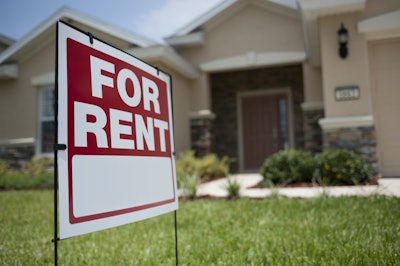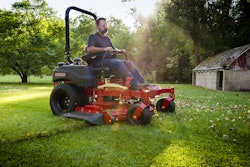
As John Haas of Haas Properties counts, they have to market their rentals, find and qualify potential tenants, handle emergency issues and deal with tenant problems. The absolute last thing most landlords want to deal with is grounds maintenance.
This is where professional landscaping comes in!
Landlords understand that a beautiful yard is good for business. It can attract tenants and add value to their properties. As a landscaping expert, these are the goals that you should have in mind.
In this article, we’ll share with you the dos and don’ts of rental property landscaping.
Dos
1. Keep it simple and low maintenance
Protecting the environment has never been more important. Using eco-friendly landscaping designs will not only help conserve the environment but will also help you provide a beautiful and simple-to-maintain yard.
One way to achieve this is to plant rain gardens. Rain gardens can be a cost-effective yet beautiful way to reduce run-off from a property. To create one, you’ll need to utilize loosely packed, deep soils and native, flood-resistant plants.
Another way is to plant groundcover instead of grass. Groundcover requires no herbicides or pesticides, no additional watering and no mowing.
2. Plant local or native shrubs
Look for flora native to the area when selecting plants and trees for the yard. Not only will planting native plants help preserve biodiversity, but it can also help save money in the long-run.
They don’t need near as much fertilizers, pesticides or supplemental watering. They also provide a habitat for birds, butterflies and other benefits to local wildlife.
3. Keep the theme neutral, not too personalized
Personalized themes work best for individuals. However, when it comes to appeasing the tastes of different individuals (tenants), a neutral theme works best. So, stick with popular native plants and accents.
4. Set a section of the lawn for pets’ needs
If the landlord allows pets, designating a section of the lawn for pets is important. You can do this either by marking the area using a few pieces of timber or simply by fencing it.
You also want to use sand pebbles or pea gravel to cover the section. Avoid bigger stones, as they may hurt pet’s paws. Doing this helps ensure that plants such as grass don’t suffer from urine burn and that solids are easy to scoop.
5. Know what local ordinances allow and require
There may be restrictions on the amount of area you can hardscape depending on your state, township or county. This is especially important if you are planning to install a patio, pool or outdoor kitchen.
So, before you commence construction, read up on local ordinances and any restrictions established by the homeowners association (HOA).
6. Keep shade in mind as you plan
Some plants do just fine in low light. However, most need at least a moderate level of sunlight. Plant labels can help you identify the amount of sun a plant requires as part sun, full sun, part shade or full shade are defined.
Don’ts
1. Don’t overdo it with paving
People generally appreciate some greenery. So, avoid paving over a lot. What’s more, paving over a lot keeps rain and runoff from returning to nearby ground and contributes to flooding and pollution.
For this reason, most municipalities are usually against the idea of over paving.
2. Avoid overdeveloping your yard
Focus on the quality, not the quantity. Landlords like to see beautiful landscaping, but if it looks too much to care for, it could be a turn-off.
Too much pavement, for instance, can lead to runoff problems when it rains. Also, if you are to install a backyard pool, keep its size in check. This will ensure that plants have ample space as well.
3. Don’t make it too personal
As already mentioned, keep the theme neutral. Your goal is to make sure that the yard appeals to as many people as possible. So keep bright colors at a minimum.
Of course, green is neutral when it comes to plants. Other colors to choose from include silver, gray, black, white and shades of brown.
4. Don’t restrict yourself to an existing layout
Unlike structures, plants can be replaced and moved quite inexpensively and without consuming too much time. So, be free to try out with different colors, structures and the overall look until you find something that fits your design.
There you have it. What to do and what not to do when it comes to rental property landscaping. A natural, holistic yard not only protects the environment, but it also requires easy maintenance with little effort.
EDITOR’S NOTE: This article was written by Haas Properties. Haas Properties is a professional property management company based in Woodstock, Georgia.










